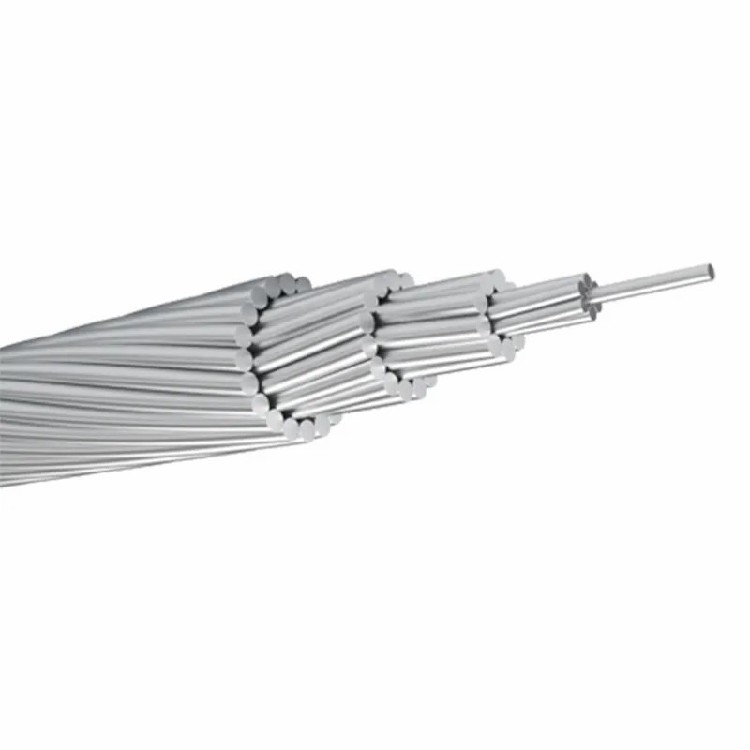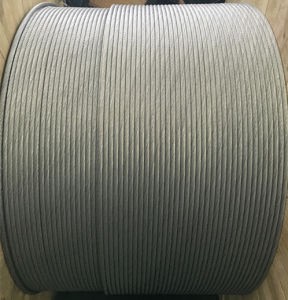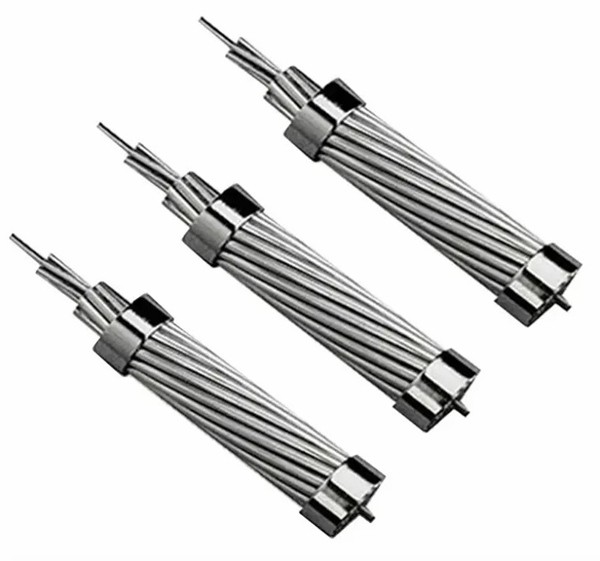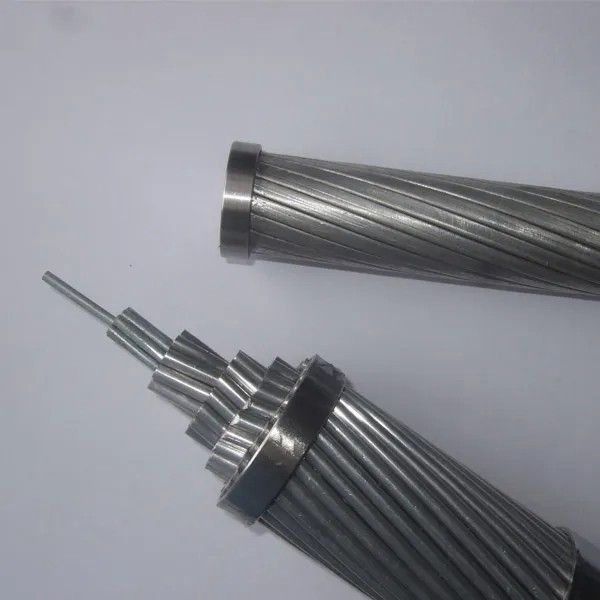Practical high-voltage overhead aluminum cables are for sale
Product description
Stretching across vast landscapes, from rolling countryside to urban peripheries, overhead aluminum cables are the most visible and ubiquitous component of the world's electrical transmission and distribution networks. Supported by sturdy towers and poles, these cables form an extensive aerial web that delivers electricity from generating stations to substations and, ultimately, to consumers. Their design is a testament to a pragmatic and efficient engineering solution honed over more than a century.
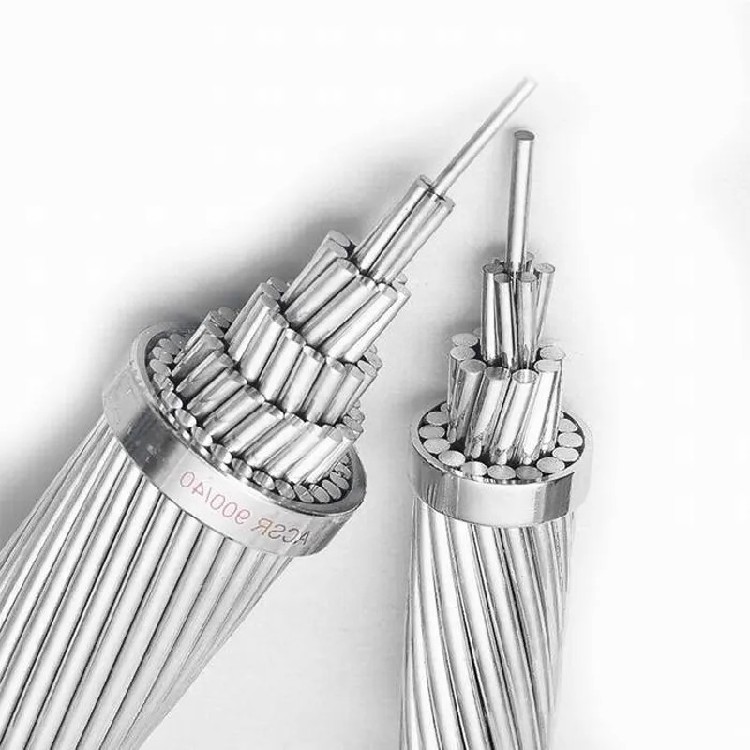
Why Aluminum? The Material of Choice
Aluminum emerged as the dominant material for overhead power lines for several compelling reasons:
Lightweight: Aluminum is significantly lighter than copper. This reduces the mechanical load on transmission towers and poles, allowing for wider spans between supports and lowering the overall cost of the infrastructure.
Cost-Effective: Although aluminum has lower conductivity per volume than copper, it is far more abundant and less expensive. This makes it the most economical choice for projects requiring thousands of miles of cable.
Adequate Conductivity: While its conductivity is about 60% that of copper, this is compensated for by using a larger cross-sectional area of aluminum to achieve similar current-carrying capacity. This trade-off between material cost and performance is highly favorable.
Corrosion Resistance: Aluminum naturally forms a protective oxide layer on its surface, which shields it from further environmental corrosion, ensuring a long service life.

Not Just Pure Aluminum: The ACSR Solution
A pure aluminum strand, while lightweight, lacks the necessary tensile strength for long spans. To solve this, engineers developed the Aluminum Conductor, Steel-Reinforced (ACSR). This is the workhorse of overhead transmission.
ACSR has a unique core-and-shell structure:
Core: A central core of high-strength galvanized steel wires.
Shell: Outer layers of high-purity aluminum wires stranded around the steel core.
This design brilliantly combines the best properties of both materials: the high tensile strength of the steel core supports the mechanical weight and tensions (like wind and ice loading), while the aluminum shell conducts the electrical current.
Key Design and Operational Considerations
The design of overhead aluminum cables involves careful balancing of electrical and mechanical factors:
Current-Carrying Capacity (Ampacity): The amount of current a cable can carry is limited by its ability to dissipate heat. Excessive current causes overheating, which can lead to sagging (as the metal expands) and permanent damage.
Sag: Cables are intentionally strung with a calculated sag between towers. This is crucial to manage thermal expansion on hot days or under high electrical load and to prevent excessive tension that could damage the towers or the cables themselves.
Corona Effect: At very high voltages (HV and EHV), the intense electric field around the conductor can ionize the surrounding air, causing a faint glow (corona discharge), audible noise, and energy loss. This is mitigated by using bundled conductors—multiple cables spaced apart for each phase—which effectively increases the overall diameter and reduces the electrical field intensity.

Advantages and Challenges
Advantages:
Lower Initial Cost: Cheaper and faster to install than underground cables.
Easier Maintenance & Inspection: Faults and damage are visible and accessible from the air or ground, making repairs quicker.
Better Heat Dissipation: Air provides natural cooling, allowing for higher ampacity compared to a buried cable of the same size.
Challenges:
Vulnerability to Weather: Ice storms, high winds, and falling trees can damage lines and cause outages.
Visual Impact: Some consider transmission lines to be an aesthetic blight on natural landscapes.
Right-of-Way: Require a cleared corridor of land, which can impact land use.
Wildlife Interaction: Birds can be electrocuted if they contact two phases simultaneously, necessitating special protective measures.
An Enduring Technology with a Future
Despite the growing use of underground cabling for specific applications, overhead aluminum cables remain the most economical and practical solution for transmitting bulk electricity over long distances. They are continuously being improved through new aluminum alloys and designs to be stronger, more efficient, and more reliable. As the grid evolves to incorporate more renewable energy, requiring new long-distance transmission lines from remote wind and solar farms, the overhead aluminum conductor will continue to be an indispensable backbone of our electrical infrastructure.
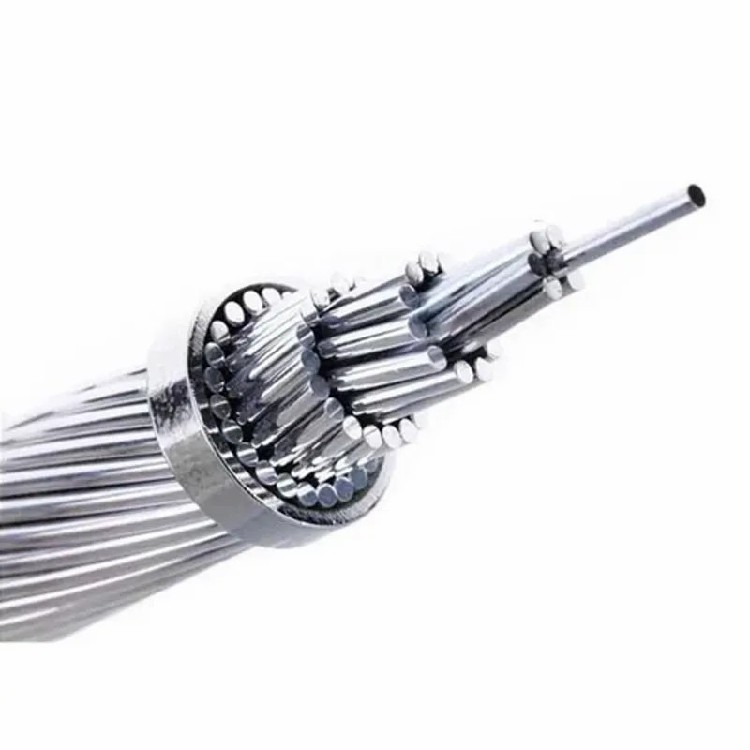
Five Common Questions & Answers
Q: Why is aluminum, not copper, the primary material for most overhead power lines?
A: Aluminum is favored primarily for its excellent strength-to-weight ratio and cost-effectiveness. While copper has higher conductivity, aluminum is significantly lighter. This reduces the mechanical load on transmission towers, allowing for longer spans between supports and lowering infrastructure costs. Furthermore, aluminum is more abundant and less expensive than copper, making it the most economical choice for extensive power grid projects.
Q: What is ACSR cable and what is its key structural advantage?
A: ACSR stands for Aluminum Conductor, Steel-Reinforced. It is the most common type of overhead cable. Its key advantage lies in its composite structure: a core of high-strength galvanized steel wires surrounded by layers of high-purity aluminum wires. The steel core provides the necessary tensile strength to withstand mechanical stresses like wind, ice, and long spans, while the aluminum outer layers efficiently conduct the electrical current.
Q: What is the "sag" in an overhead line and why is it critically important?
A: Sag is the intentional, calculated vertical dip in a cable between two support points. It is not a sign of poor installation but a crucial engineering feature. It provides a safety margin to accommodate thermal expansion. When the cable heats up from electrical load or sunlight, it lengthens and sags more. Without adequate initial sag, the cable could become too taut, potentially damaging the towers, insulators, or the conductor itself due to excessive mechanical stress.
Q: What is the "corona effect" and how is it mitigated in high-voltage lines?
A: The corona effect is a phenomenon where the intense electric field around a high-voltage conductor ionizes the surrounding air, leading to a faint glow, audible buzzing, ozone production, and energy loss. It is mitigated by using bundled conductors. Instead of a single large cable per phase, two or more smaller conductors are used per phase, spaced apart. This configuration effectively increases the overall diameter of the "conductor bundle," which smooths out the electrical field gradient and reduces the potential for ionization.
Q: What are the main trade-offs between overhead aluminum cables and underground cables?
A: The choice involves a classic trade-off between cost, reliability, and environmental impact.
Overhead Cables (Aluminum): The main advantages are significantly lower initial cost, easier installation, and simpler visual inspection and maintenance. The primary disadvantages are exposure to weather-related outages (storms, ice, wind), visual impact on the landscape, and the requirement for a cleared right-of-way.
Underground Cables: The main advantages are greatly improved reliability and resilience to weather, reduced visual impact, and no need for a wide right-of-way. The major disadvantages are a much higher installation cost (up to 10x more), more complex and time-consuming repair processes, and limitations on heat dissipation, which can reduce current-carrying capacity compared to an equivalent overhead line cooled by ambient air.
Recommended products
